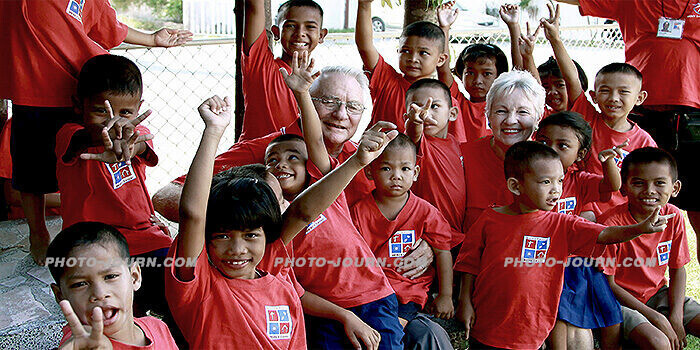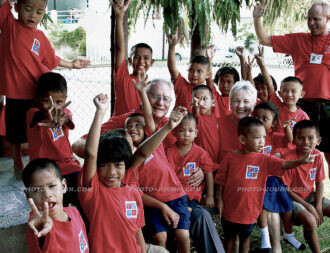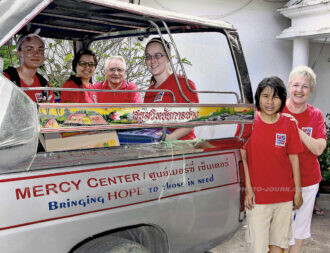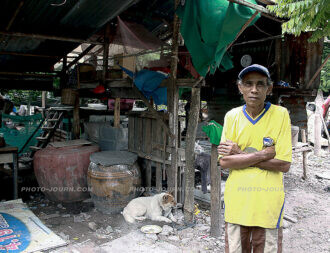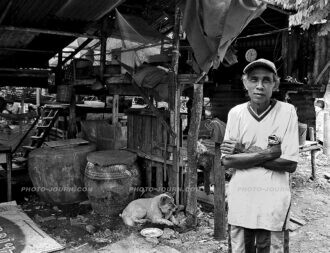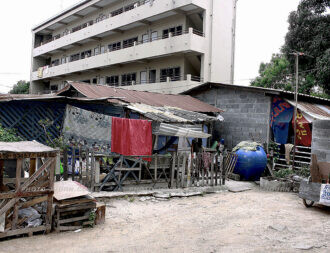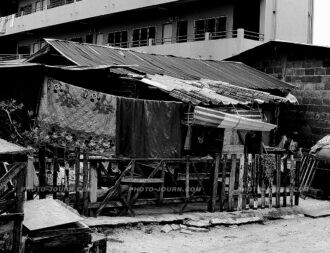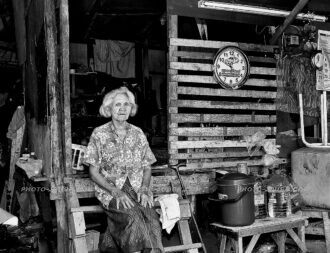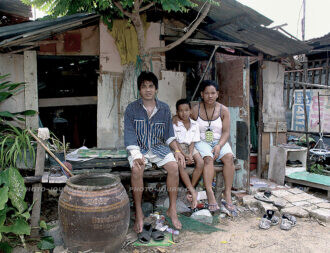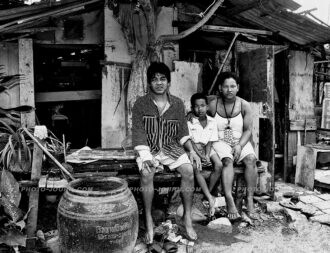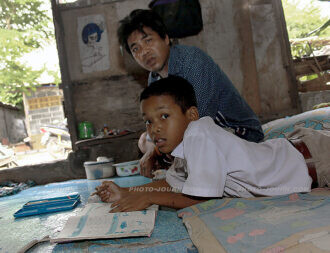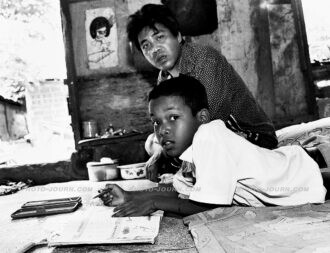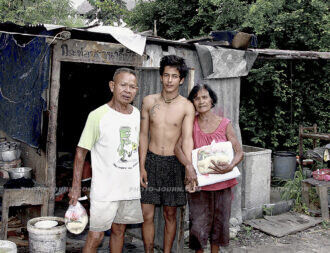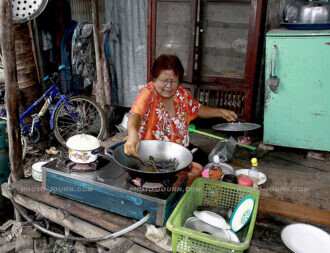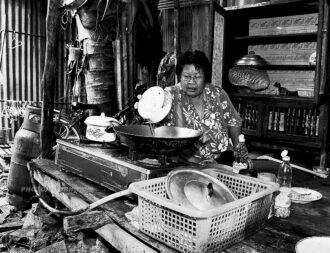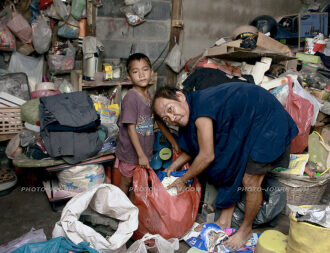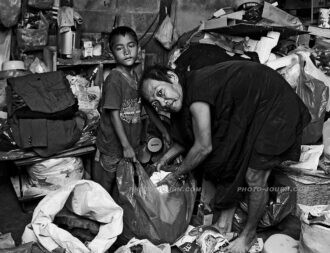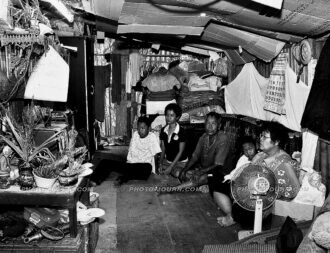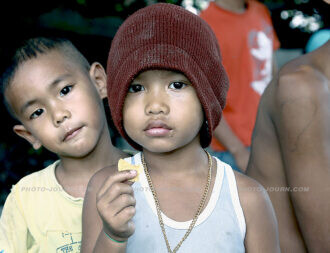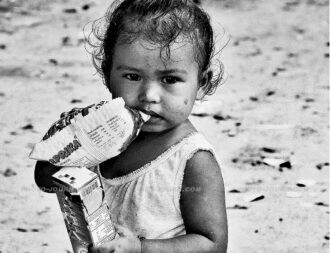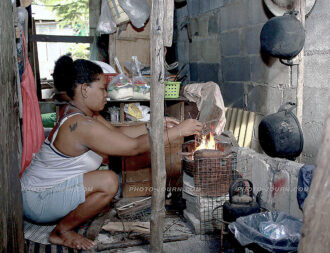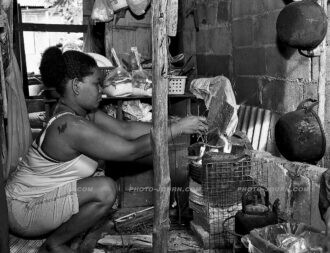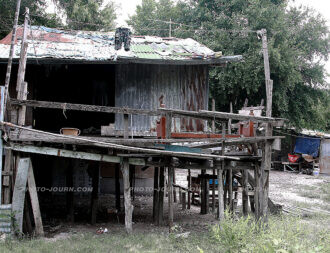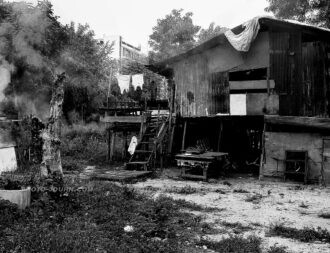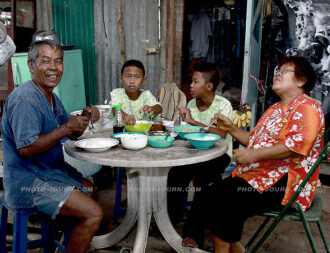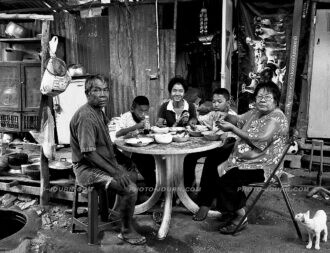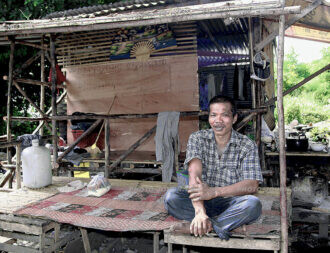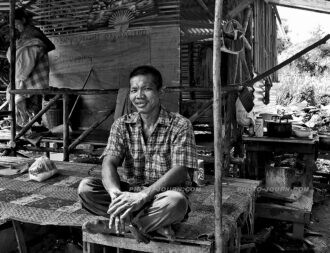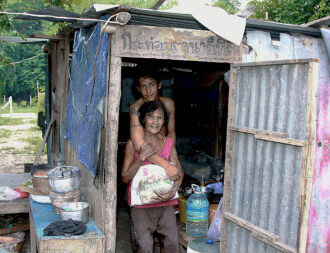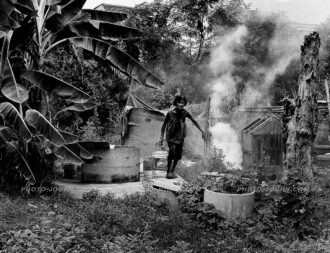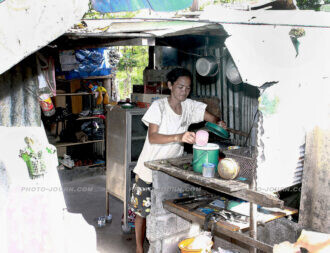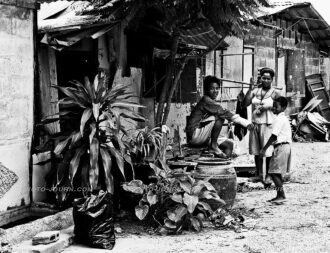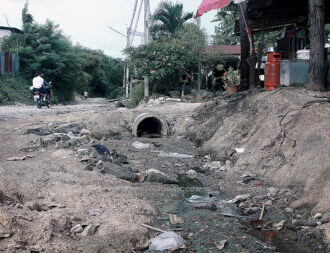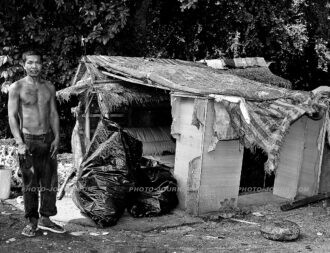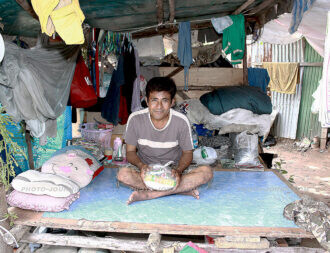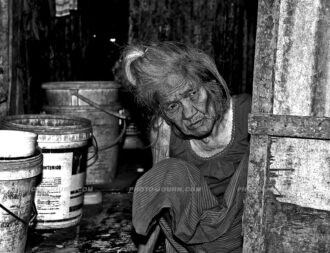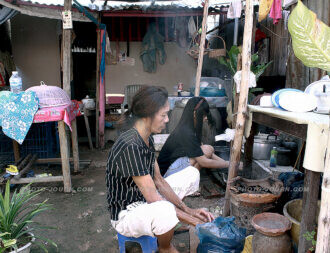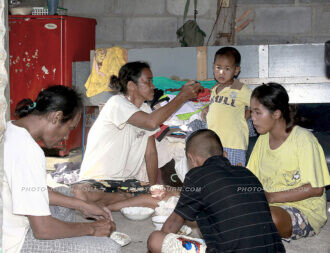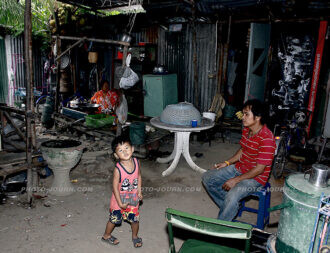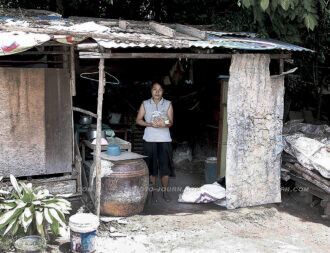Pattaya City may have grown to become one of Thailand’s most recognised international tourist hotspots, but intermingled amongst the glittering lights, towering condominiums and wide selection of retail outlets lies a grimmer and less glamorous Pattaya; the city’s slums, for whom the bright lights and tourism industry mean next to nothing, apart from for those who scavenge amongst its refuse for a living.
Living in ramshackle accommodation on vacant plots of land, but hidden from the view of tourists by towering trees, these families and individuals eke out a subsistence living collecting recyclable goods or working as casual day labourers, while others survive on the generosity of others, being too old, frail, or ill to even forage.
This is a side of Thai society you won’t find depicted in the guidebooks and certainly not something the Tourism Authority of Thailand (TAT) would wish to have associated in any way with its “Amazing” anything tagline.
No running water, no electricity, no bathroom
With no running water, no electricity, no bathrooms, the living conditions in some of the slums of Pattaya can only be described as abysmal.
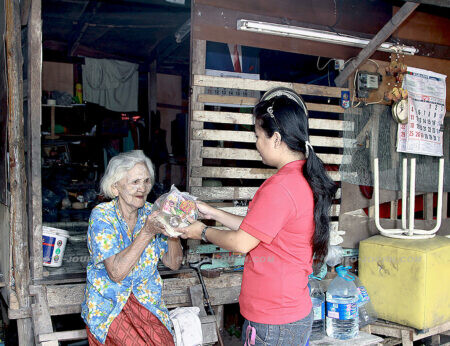
Though Pattaya’s poor might call their shelters “home”, the word has little to do with what the utterance conjures up in most people’s minds.
Living in shacks as crudely constructed as a few sheets of tin nailed to some timber off-cuts, with a discarded tarpaulin as a roof, comfort in the slums of Pattaya is measured by things such as whether there is a well to draw “fresh” water from, to whether heavy rain will see a river manifest where you are sleeping.
The uncertainty of tenure is a big problem, with instances in the past of construction crews arriving up out of the blue in the morning, giving the people living there just a few minutes to gather their belongings, before bulldozers levelled everything to make way for a new development project. If people weren’t present at the time, their humble structures were destroyed, along with any possessions they may have had.
For some of Pattaya’s poor life is a little more certain. Land owners might rent them space to erect a shelter, and even supply a light bulb, but when you are 70- or 80-years-old with no family and unable to even go foraging because of cataracts or other ailments, charges such as Bt600 (about US$18.80) per month is a lot of money.
For the past 13 years an unassuming Protestant preacher and his wife from Edmonton, Canada, the Reverend Fred Doell and Dianne, have brought a little relief to Pattaya’s poor, starting first with a children’s home.
Establishing the aptly named Mercy Center, what began as a desire to help orphaned children, has grown into a much larger operation, with the shelter now housing 17 orphaned, abandoned, or at-risk kids between 2 and 11-years-old, while a school scholarship program pays the uniform, transport and lunch-time meal costs of more than 160 children from the slums.
In addition, an outreach program into Pattaya’s slums provides small food parcels once a week to the poor, infirm and elderly – along the way showing the Pattaya’s poor that they are not forgotten and there is always hope.
The need for help continues to grow
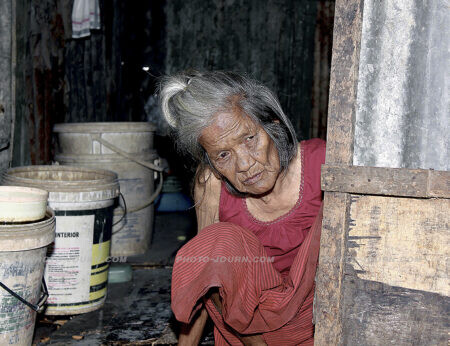
Funded almost entirely by private donations, 73-year-old Fred says the biggest problem is that while the number of Pattaya’s poor continues to grow, donations don’t always follow suit.
Now requiring a staff of five to run, Fred said that even with him and his wife not drawing a salary, Mercy Center had costs of about Bt200,000 ($62,715) per month.
The outreach program also provides those living in the slums with mosquito nets, and other items to make their existence a little more comfortable, including basic building materials to renovate or construct sturdier dwellings. This is also funded by donations.
Without the invaluable help of Fred Doell and the Mercy Center staff and volunteers the accompanying photographs would have been very difficult to obtain.
People visiting Thailand who might like to assist Pattaya’s poor and helpless can contact Fred via the Mercy Center website (www.mercypattaya.com).
The Canadian pastor bringing mercy and hope to Pattaya’s poor slide gallery
Photos John Le Fevre
Related:
A similar article and photos were first published on CNNGo on August 24, 2010.
He has spent extensive periods of time working in Africa and throughout Southeast Asia, with stints in the Middle East, the USA, and England.
He has covered major world events including Operation Desert Shield/ Storm, the 1991 pillage in Zaire, the 1994 Rwanda genocide, the 1999 East Timor independence unrest, the 2004 Asian tsunami, and the 2009, 2010, and 2014 Bangkok political protests.
In 1995 he was a Walkley Award finalist, the highest awards in Australian journalism, for his coverage of the 1995 Zaire (now Democratic Republic of Congo) Ebola outbreak.
Most recently he was the Thailand editor/ managing editor of AEC News Today . Prior to that he was the deputy editor and Thailand and Greater Mekong Sub-region editor for The Establishment Post, predecessor of Asean Today.
In the mid-80s and early 90s he owned JLF Promotions, the largest above and below the line marketing and PR firm servicing the high-technology industry in Australia. It was sold in 1995.
Opinions and views expressed on this site are those of the author’s only. Read more at About me
Latest posts by John Le Fevre (see all)
- Kaavan’s great escape photo special (video & gallery) – November 30, 2020
- A real life fairy tale: Cambodia provides sanctuary to Kaavan, the world’s loneliest elephant (video & gallery) *updated – November 30, 2020
- Death for corruption and press freedom abused as Thailand continues Nth Korean-like slide – July 23, 2015
- Thailand’s young rice farmers boost income, slash costs with switch to organic, AWD method – May 29, 2015
